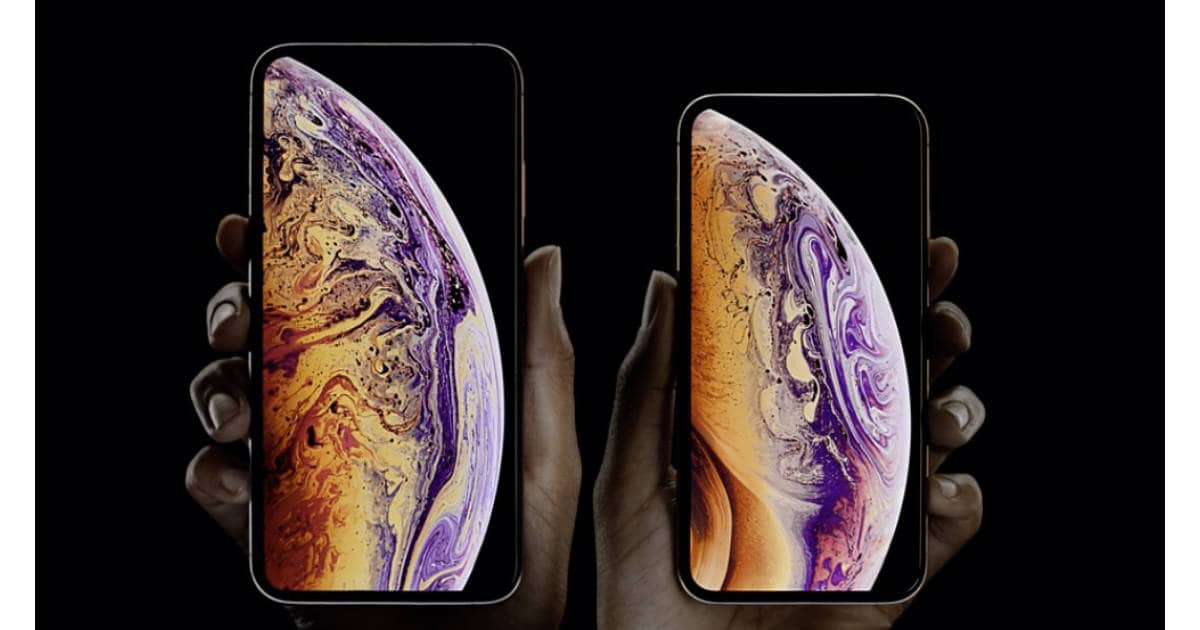Apple unveiled three new iPhone models at its “Gather Round” media event on Wednesday. The iPhone XS and iPhone XS Max have OLED screens, and the iPhone XR sports a lower price tag and LCD screen. All three ship with iOS 12 pre-installed.

iPhone XS and iPhone XS Max
The iPhone XS and iPhone XS Max keep the iPhone X thin-bezel body style with display notch for front-facing cameras and sensors. Both include an OLED Super Retina screen, front-facing Face ID camera, dual rear-facing cameras, 802.11ac Wi-Fi, Bluetooth 5.0, stereo speakers, and NFC support for Apple Pay contactless payments. They also include new stereo speakers that offer better sound, and dual-SIM capability.
The new models sport an A12 Bionic processor with a 7nm process. It packs in a 6-core CPO and 4-core GPU, plus a Neural Engine. The GPU is up to 50% faster than the GPU in the A11 Bionic processor in the iPhone X. The A12 Bionic chip can handle up to 5 trillion operations per second, compared to the 600 billion for the iPhone X.
Core ML is now 9 times faster, and uses 1/10 the power compared to the iPhone X.
The body is made from surgical-grade steel. The iPhone XS screen measures 5.8-inches, just like the iPhone X. The iPhone XS Max has a 6.5-inch display. Apple VP of World Wide Marketing says these models have the most durable glass of any smartphone ever made.
iPhone XS Cameras
The dual rear-facing cameras are 12 MP with wide-angle and 2x optical telephoto with 6-element lenses. The cameras use what Apple is calling “Smart HDR” that composites shadows, highlights, and other details into a single image. You can also change the depth of field after taking photos.
Schiller called this “a new era of photography,” and “computational photography.”
iPhone XS Battery Life and SIM
iPhone XS battery lasts 30 minutes longer each day compared to iPhone X. iPhone XS Max runs 1.5 hours longer.
Both are available in Space Gray, silver, and gold in 64 GB, 256 GB, and 512 GB capacities.
The dual-SIM feature uses what Apple calls Dual SIM Dual Standby, which lets a single iPhone support two phone numbers at the same time. The phones now use Apple’s eSIM technology and include a standard SIM slot. For models in China, the phones have dual SIM slots in a single tray.
iPhone XR
The iPhone XR fits between the iPhone XS and iPhone XS Max size-wise, but comes with a lower price tag. It has a 6.1-inch Liquid Retina LCD screen instead of OLED, a single 12 MP rear-facing camera, front-facing Face ID camera, 802.11ac Wi-Fi, Bluetooth 5.0, stereo speakers, and NFC support for Apple Pay contactless payments.
The new model keeps the iPhone X styling with a thin bezel and display notch for sensors and cameras. Like the iPhone XS and iPhone XS Max, the iPhone XR uses the A12 Bionic processor.
Instead 3D Touch it uses a new feature called Haptic Touch. That’s unfortunate, because Apple is still fracturing the user experience on its smartphones.
The single-lense camera supports portrait mode, Smart HDR, and dynamic depth of field, just like the XS and XS Max.
The lower-priced model is available in aircraft-grade aluminum in coral, black, blue, yellow, white, and PRODUCT(RED) with 64 GB, 128 GB, and 256 GB capacities. Compared to the iPhone 8 Plus, it offers 1.5 hours longer battery life.
iPhone XS, iPhone XS Max, iPhone XR Availability
Pre-orders for the iPhone XS and XS Max starts this Friday, September 14th. Pricing starts at US$999 for the iPhone XS and $1,099 for the iPhone X Max. Deliveries and in-store availability follows a week later on September 21st.
Pricing for the iPhone XR starts at $749. Pre-orders start on October and it’ll ship on October 26th.
Correct me if I’m wrong, but I’ve never seen Apple emphasize product longevity as much as it did in this presentation when Tim (or Phil?) laid out how many models starting from the 5S can still run iOS12. This focus might be driven by a number of things:
1. Apple is trying to blunt any criticism about the increased average prices of its new phones by highlighting that they will be useable much longer than competitor’s phones. This doesn’t really affect customers who can afford to purchase the more expensive phones at the same replacement rate as before, but for those who have to reach a little to buy the top of the line model this serves as a psychological crutch for biting the bullet.
2. In effect, Apple design practice is actually heading the opposite direction from programmed obsolescence (Hooray! Although I never thought they were ever guilty of programmed obsolescence). But does this mean that Apple does not foresee any major technological leaps in smartphone tech in the medium term? You can only price your product that conspicuously high if you are confident that your customer will not be burned by unexpected premature obsolescence.
3. In a nod to the environment, Apple is putting their money where their mouth is by designing increased longevity into their hardware. Good for them, if that’s the case.
Has anyone else noticed it looks like the SE is GONE?
I can’t find it on the AppleStore or on the App.
This is the second iPhone I’ve owned, and both of them ended up orphans. (5C and them the SE.)
I’m pretty happy with my iPhone 8 Plus, so I might wait another year before updating. At least that’s what my wife has told me.
My wife and I each have iPhone 7 so we will probably upgrade. Later in the year though when the dust has settled. We will get new Apple Watches too.